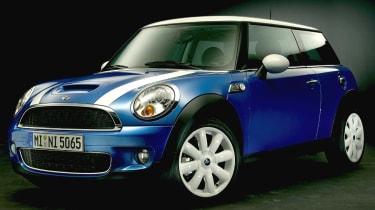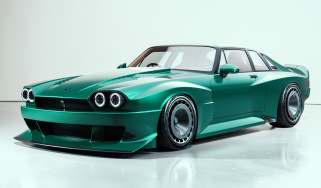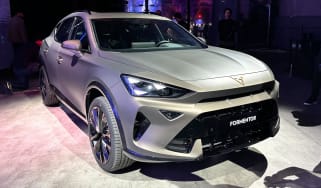The new Mini
New engines for second-generation BMW Mini; we drive the turbocharged Cooper S
A new Mini. So why are we showing pictures of the old one? Look again. The differences are subtle but numerous. The new Mini is 60mm longer, with a belt line 20mm higher. The bonnet is still combined with the front wings in a one-piece pressing, but it now leaves the headlights and wheelarches behind when opened. There’s more rear-seat space, too, and a boot that's bigger by 10 litres, although still tiny.
With the bonnet open, you can see the biggest change of all: the cheap-to-make Tritec four-cylinder engine from Brazil has gone. In its place is another joint-venture unit, this time the result of work with PSA, who will use the engine in the Peugeot 207.
Power for the Mini Cooper comes from a normally-aspirated, Valvetronic version of the new, all-aluminium 1.6, producing 118bhp (up just 3bhp on the previous Cooper unit). There’s no word yet on the next Mini One engine – a 1.4-litre version seems likely, but the current Mini One will continue for a while, along with the convertibles.
It's the Cooper S, however, which undergoes the biggest character change of all. The current S has an air-scoop on the bonnet to feed its supercharger’s intercooler, but in the new model the supercharger has been replaced by a turbocharger, whose intercooler is conventionally mounted at the front. The bonnet scoop is therefore now a fake, there to distinguish the hotter model and maintain a link to the car it replaces.
The S promises 172bhp (up 4bhp on the outgoing car) with a torque curve that's much fatter at low revs. An invitation to try out a barely disguised pre-production Cooper S at the Zandvoort race circuit in Holland was a good opportunity to find out just how different the new car will be.
A new starter button is accompanied by a 'smart key' system – the keys being smart in the sense that each one stores its holder's preferences for stereo presets and the like. Press the button and the burble at idle is typically Mini. Drive off, though, and things aren’t the same at all.
Where’s the supercharger whine? Apparently many buyers didn’t like it. Nor did they like the old engine’s thirst (the new one has an official EC average of around 40mpg).
The new engine's turbo is a twin-scroll unit, enabling it to make better use of exhaust pulses for a faster spin-up time, and the torque peak of 177lb ft (a rise of 22lb ft over the old S) runs from 1600 to 5000rpm – it can also overboost briefly to 192lb ft.
Yet despite all this, the instant, crisp-edged, Mini-flavoured eagerness is missing. Floor the throttle at 2000rpm and things are torpid for a couple of seconds. Once on boost, though, the new S is a mightily energetic machine with the sort of torque that has you in a higher gear than instinct would suggest. What you thought was a rev-to-death second-gear corner proves to be a punch-out-in-third bend with a much higher exit speed, which is just as well because the rev-limiter stops play at 6500rpm.
As for the handling, it’s different, but not necessarily better. The basic floorpan and suspension geometry are unchanged, but the rear suspension gets cast aluminium lower transverse arms and the trailing links seen on the Mini GP. To save energy the steering now uses electric assistance, rather than electro-hydraulic. It gives a similar feel to before but feels a touch viscous during quick direction changes.
That lovely Mini flickability has been toned down, though, partly because the engineers wanted to reduce the yaw gain on lift-off. We can't help but wonder why. It’s a small hot hatch, so lift-off tail-flicks ought to go with the territory as long as they don’t develop into something unmanageable. Nevertheless, there is now more understeer more of the time, to the detriment of the front tyres’ grip and health after a few laps.
So, it's a faster and more civilised Mini, but it might just have lost some Mini-ness. We’ll find out for sure at the range launch in September.




